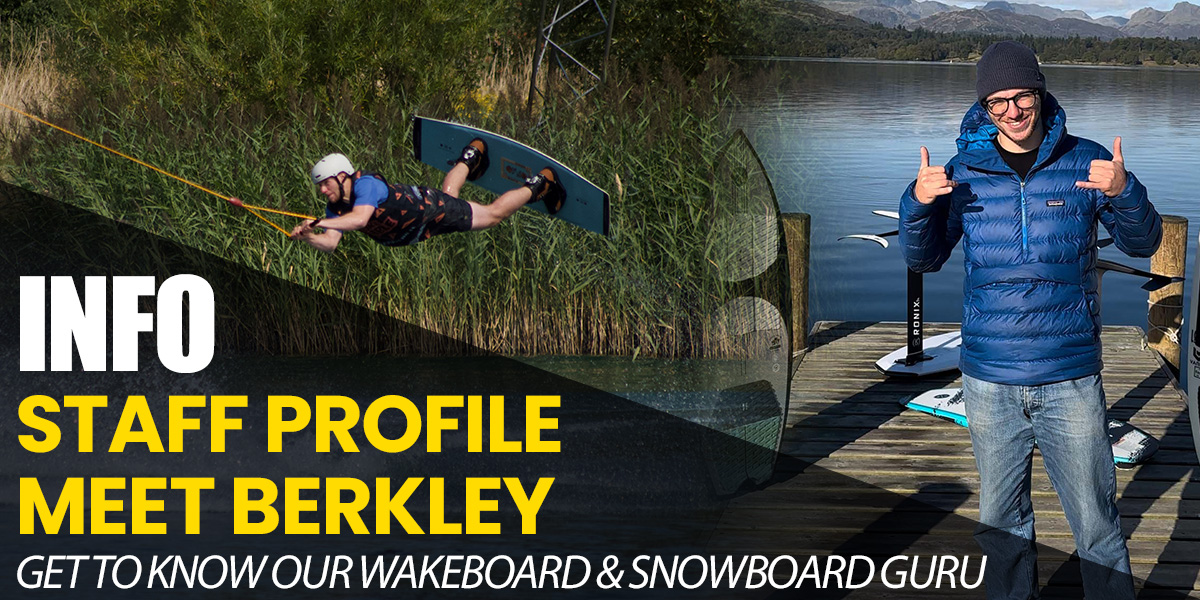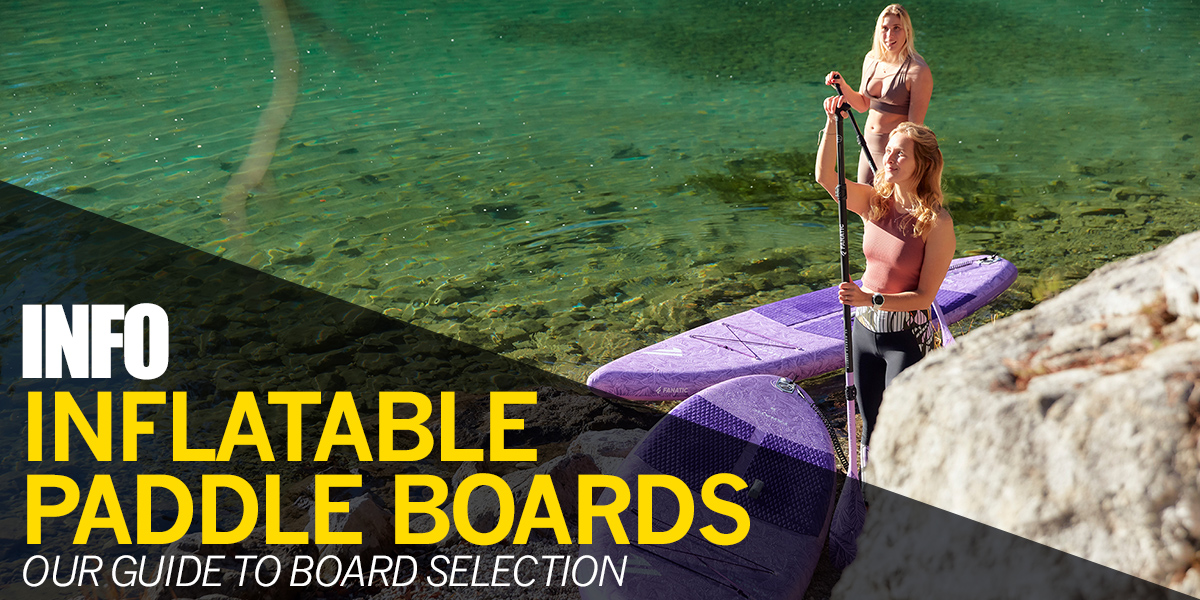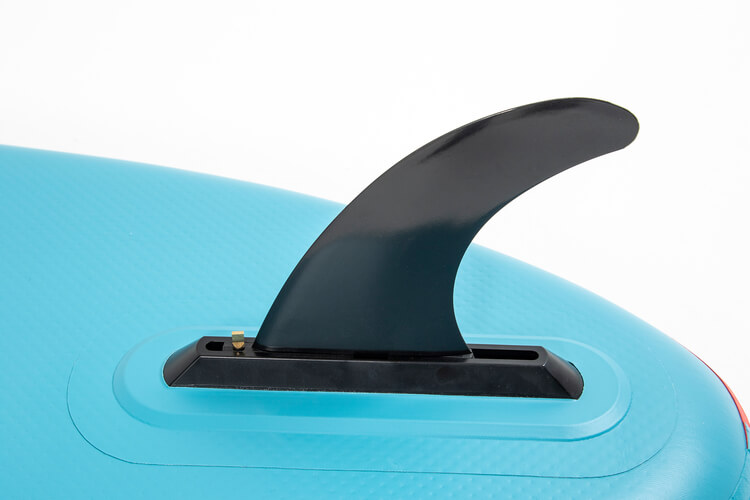With almost everyone spending more time around home this has been a fantastic opportunity to explore our local areas, whether land or water. Less opportunity to travel internationally has been a positive in allowing us to appreciate the UK and what a fantastic place it is. During periods when customers have been allowed in store we have noticed many enquiries about starting new sports, especially those you can enjoy locally. Perhaps the best example has been stand up paddle boarding. With so many brands, models, shapes and sizes on the market we thought it useful to create a short, concise guide to purchasing an inflatable paddle board.
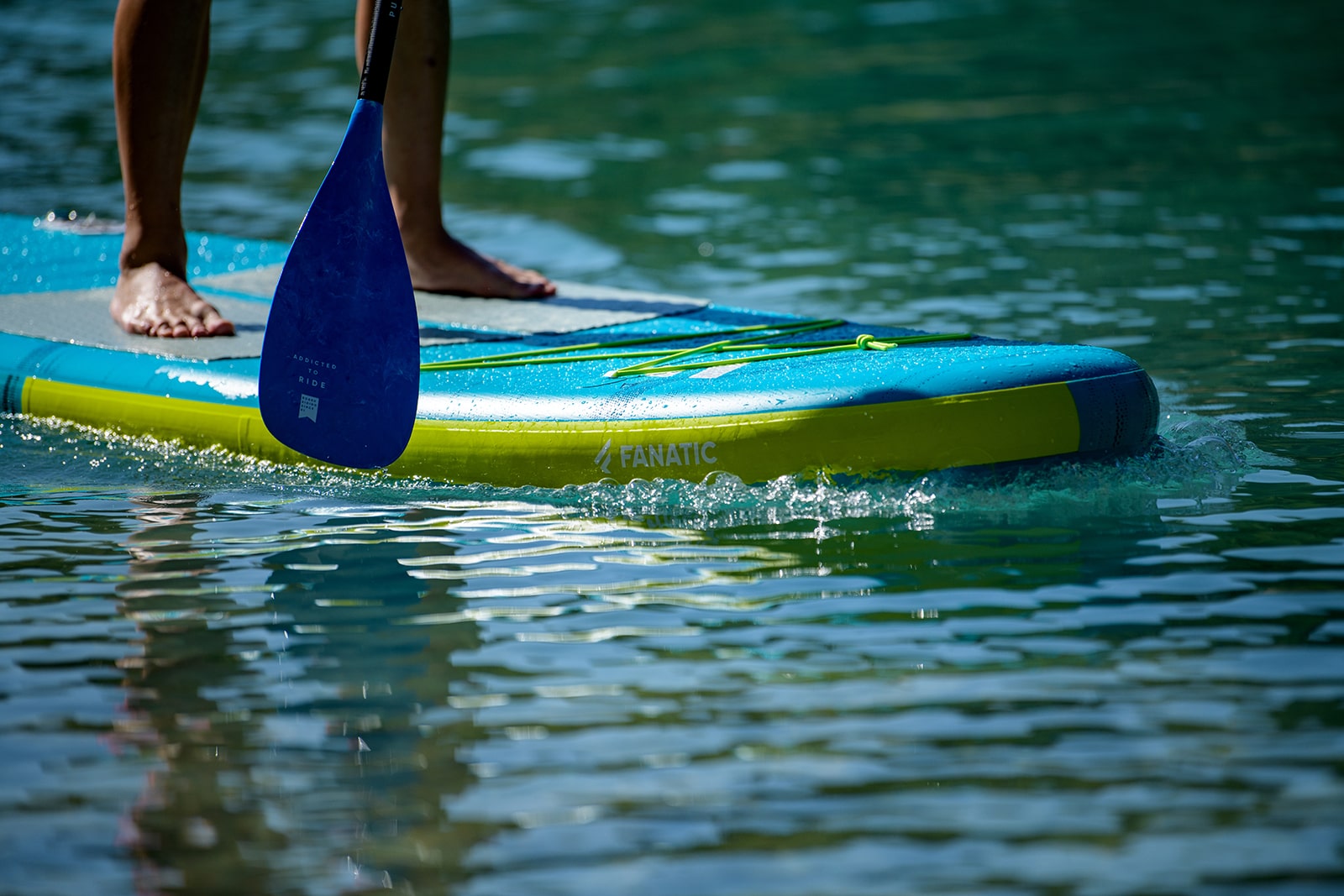
General Traits
While there is much to discuss there are several general design principles that are useful to know. These are independent of brand and should help with your selection.
- Longer is faster – As boards increase in length so does their forward speed. Longer boards also afford additional space for kit storage or occasional tandem use, such as with a small child.
- Flatter is faster – The rocker of a board relates to how much the bow and stern sit off the ground when placed on a flat surface. Less rocker is more efficient, meaning the board is not only faster but easier to keep in a straight line. Conversely, if you want a board to turn on a dime then it should have a higher rocker. Rocker is not universal and certain boards will be highly rockered in the nose to ride over waves, while remaining flat in the tail to maintain speed.
- Longer is straighter – Nobody likes making corrective strokes to maintain a straight course. The increased waterline of a longer board means they stay in a straight line with less effort.
- Width equals stability but lacks speed – The wider a board the more stable it will feel. The compromise is that you lose speed and it may be more awkward to place the paddle in the water if you go overly wide.
- Tail shape matters – The shape of the tail is important. Models that pull in to a rounded point will be easier to turn, while square tails offer stability and improved straight line tracking.
- Don’t overlook thickness – The sidewall depth of a board is critical. Thinner boards, around 4 inches, will feel more stable as you are closer to the water surface. However, these require very high psi figures to provide rigidity and thus most brands have settled around 5 inches as the optimal balance. You should avoid very short boards (9ft) with high thickness (6 inch) as these are heavily affected by wind, which can significantly affect your progress.

Dimensions
There is a great deal of variety in length and width. Rather than going into specifics of each board we thought it would be useful for you to know that surface area and volume are critical. Ultimately, the higher volume and larger surface area, the heavier a rider the board can support. In general you can use these rules:
Length:
Under 9ft – youth or surf orientated boards.
9.5-11ft – all round versatile boards
11ft and above – touring or race orientated boards.
Width
Under 30” – considered narrow. Very responsive edge to edge but this comes at a price in reducing stability. Narrow boards are fast, so most in this category will be distance or race orientated.
30-33” – considered average. This range of board width will be used in most mainstream all round and touring models. If in doubt, aim around 32”
34” plus – considered wide. The aim here would be to improve stability so boards in this category will work best for heavier paddlers or use in turbulent conditions, such as white water.
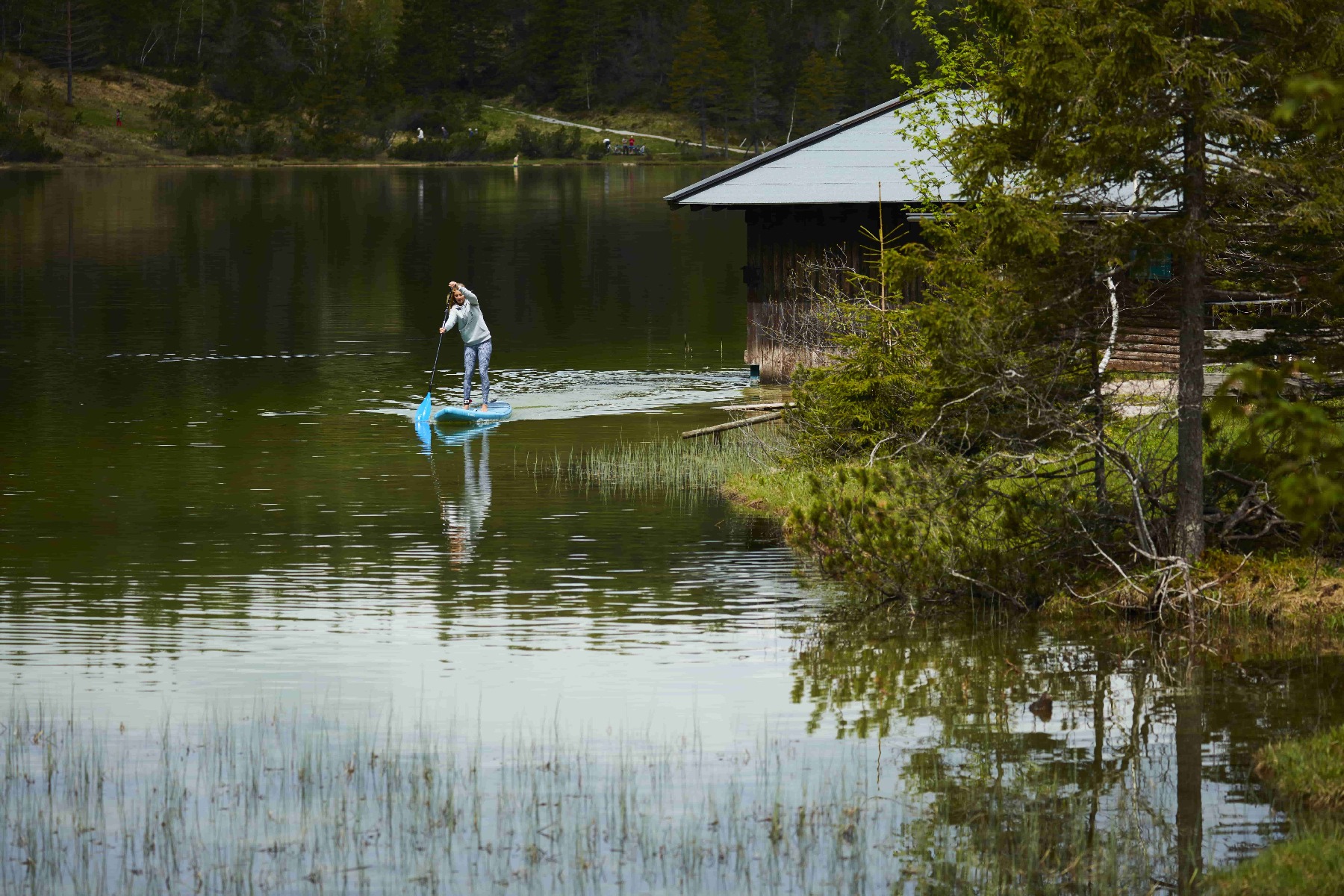
There is much to know about inflatable paddle board construction and many brands use their own terminology to further add to the confusion. The main area you should be concerned with is whether the board is single or double layer. This refers to whether the skin of the board is single skin or two layers. In the case of the latter, the two layers used to be glued together and may still be on certain budget models. The risk of doing so is delamination and thus most quality twin skin boards are now heat and pressure bonded. Ultimately, a single layer board will be light weight and vulnerable to abrasion, whereas you add a little weight to move to double layer but increase rigidity as well as durability. Pay particular attention to whether the rail is single or double layer as this is the area where most of your wear will occur.
However, it is actually the core of the board that has a primary effect on rigidity and performance. This refers to the drop stitch, thousands of strands connecting the top and base of your pride and joy. In holding the board together you eliminate potential for ballooning, thus improving the resulting psi figure. Ultimately a stiffer board is more efficient, quicker and gives confidence because you eliminate the inherent instability associated with flex. The density of these drop stitch strands, as well as how they are connected to the outer layers is ultimately what determines the pressure. You should look for 15psi as a minimum figure to ensure the board is rigid and paddles well.

(an exploded view of a quality construction)
Fins
The main choice with fins is how many and whether they are removable or permanently attached. Removable options are useful for safe storage and travel, as well as allowing you to use different fin sizes and shapes to adjust the feel of the board. Ultimately, the larger the fin the easier it will be to paddle in a straight line but the more difficult to turn. It we were to find a positive to fins that are permanently attached it would be that they are impossible to lose! However, in our view the benefit of removable options far outweighs the risks. The way a removable fin attaches to the board can vary but the US plate and screw system remains favoured by most brands. This is simple and secure, with no real potential for breakages. It is also universal amongst a range of board sports, meaning easy access to spares and a wide range of potential fins to try.
Touring boards will tend to use one larger fin, while all round and surf style models will use a thruster setup. The term thruster is derived from the surf market and simply means that you have two small side fins and one large centre. This provides grip but without the board being difficult to manoeuvre, which could be the case in the surf with a board that had a single larger fin.
Deck Pads
The material used to produce an inflatable board creates a slippery surface when wet. It would be a challenge to paddle and thus all models will use a foam pad that covers some or all of the board. The amount of surface area covered is a balance and each brand will have their own opinion. Too little and you risk slipping, too much and you have added expense and weight. We don’t see many paddlers stood right on the nose of their boards and thus it seems sensible that the front third, or so, is left bare.
Fittings
There are a range of possible fixtures and fittings with SUPS. The main point of consideration is to ensure there is a D ring at the tail so you can attach a leash. While this might seem like an extravagance it is critical to be connected whenever you paddle. Inflatable boards sit a little proud of the water it would be easy to become separated in windy conditions.
The second place you will see fittings on the board is with deck bungees. This is simply an area of bungee cord connected to the board via several d-rings. It is a useful feature in allowing you to stow a dry bag or accessories safely while paddling.
Finally, if you’re looking for outright versatility then you will find models that include an attachment for a windsurf sail. This is a brass threaded insert built into the board. Using a board that has this attachment has no downside for paddle boarding but will simply allow you to vary your sport in years to come.
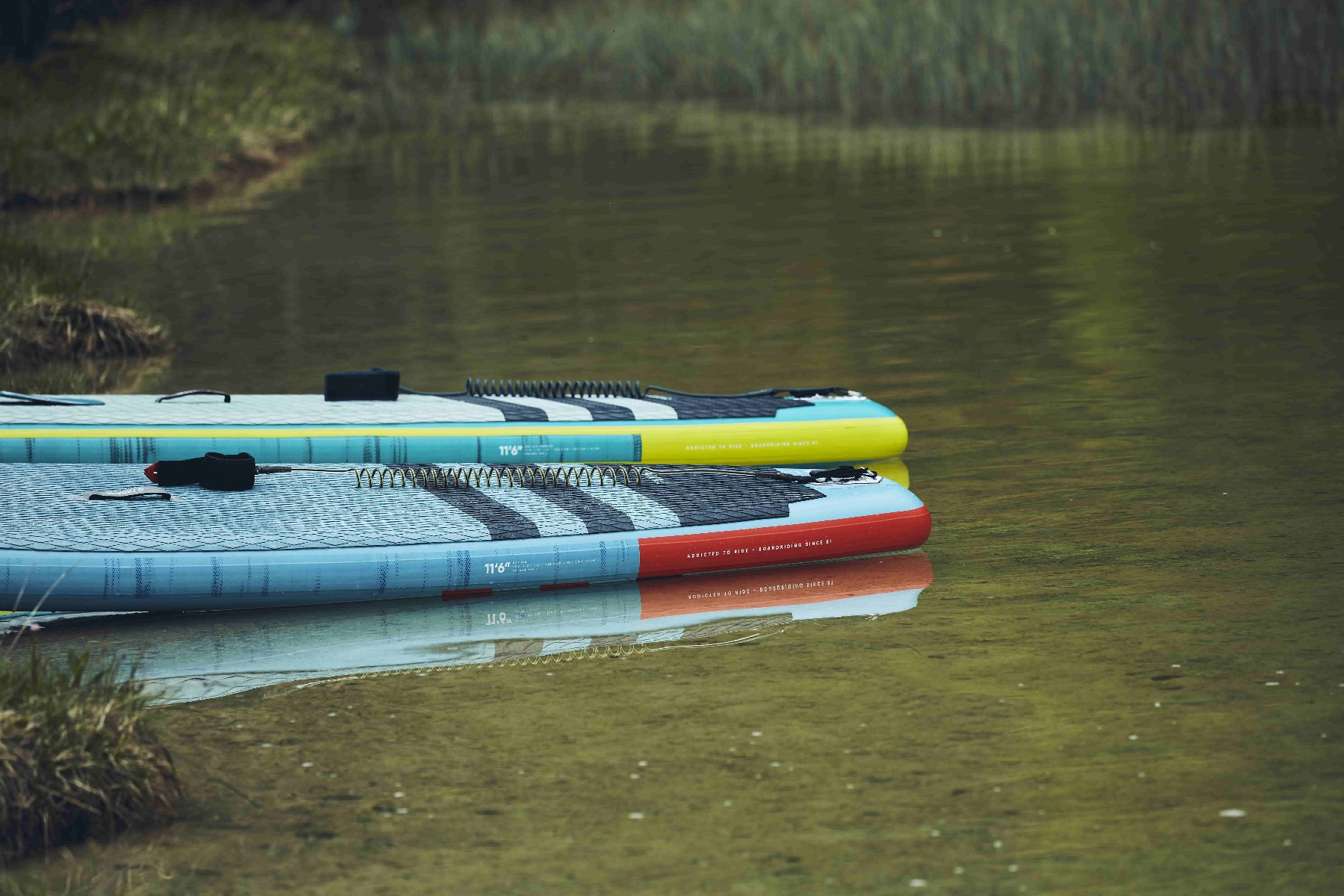
Conclusion
SUP is undoubtedly a fantastic sport that offers a low impact physical workout, while at the same time providing an absolute escape from the stresses of daily life. Explore your local waterways with an inflatable board, safe in the knowledge that they are forgiving, durable and good value. We hope this short guide has been a useful resource and always know our specialist staff are on hand to make a specific recommendation if required.
Contact us here
Phone - 01924 444888
email - [email protected]










